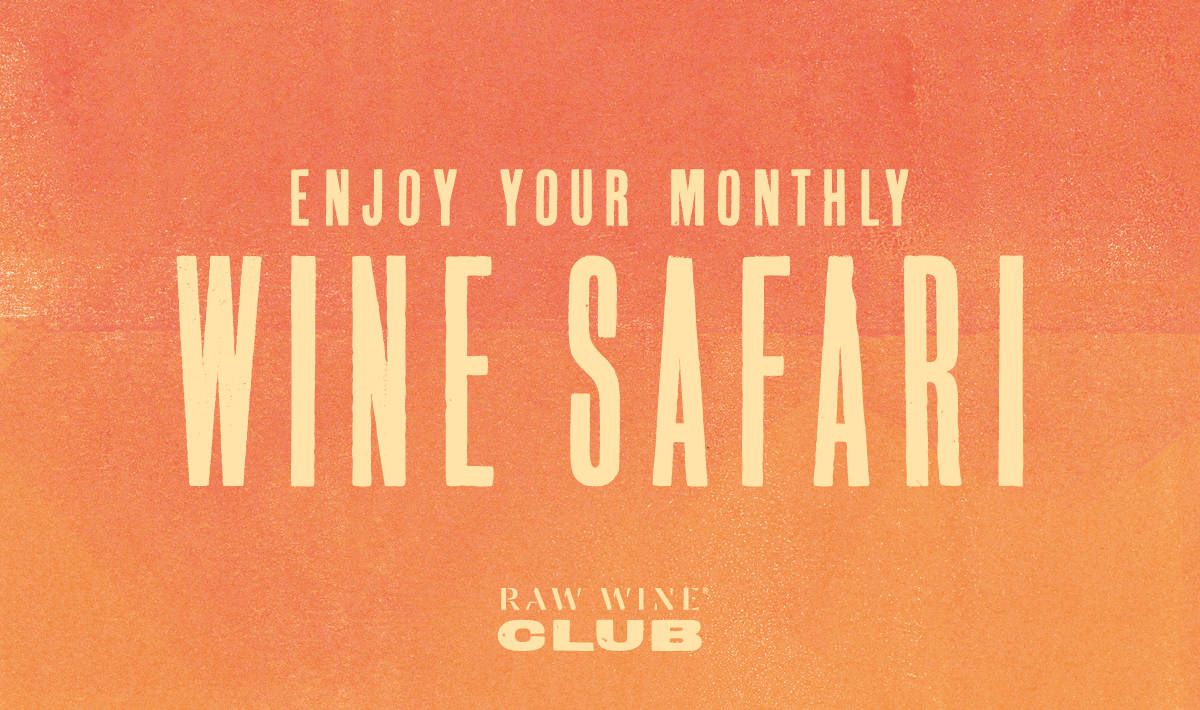
RAW WINE Club - Tasting Notes - January 2024 Selection
35 min read
Happy 2024! This January takes us on another delicious tasting foray, this time into some of the more unusual parts of the natural wine world. There’s a fresh, crisp white from the lush, steep hills of Asturias in northern Spain; a deep, almost golden, full-bodied, bone-dry, mineral riesling from Alsace; a salty, unusual, Peruvian rosé; a thirst-quenching, light, juicy, Czech red in a handy 1-liter bottle; a peppery, elegant Syrah from the home of the Gods of Ancient Greece, crafted by Jason Ligas, one of Greece's most celebrated natural wine makers (this is the first vintage of his brand new venture); and, finally, a hugely complex, warming, concentrated Syrah by a young couple who worked alongside natural wine legend Pierre Overnoy in the Jura before settling down in the Rhône.
Enjoy!
Warmest wishes,
Isabelle Legeron MW, Founder of RAW WINE
---
Dominio del Urogallo, La Fanfarria Blanco, Asturias, Spain, 2020
Dominio del Urogallo is a small winery in Asturias, on Spain's northern coast. It's run by Francisco Asencio, who cultivates the vineyards on steep slopes, using biodynamic viticulture. Francisco also makes wine in Bierzo and the Sherry Triangle.
Q&A with Francisco Asencio
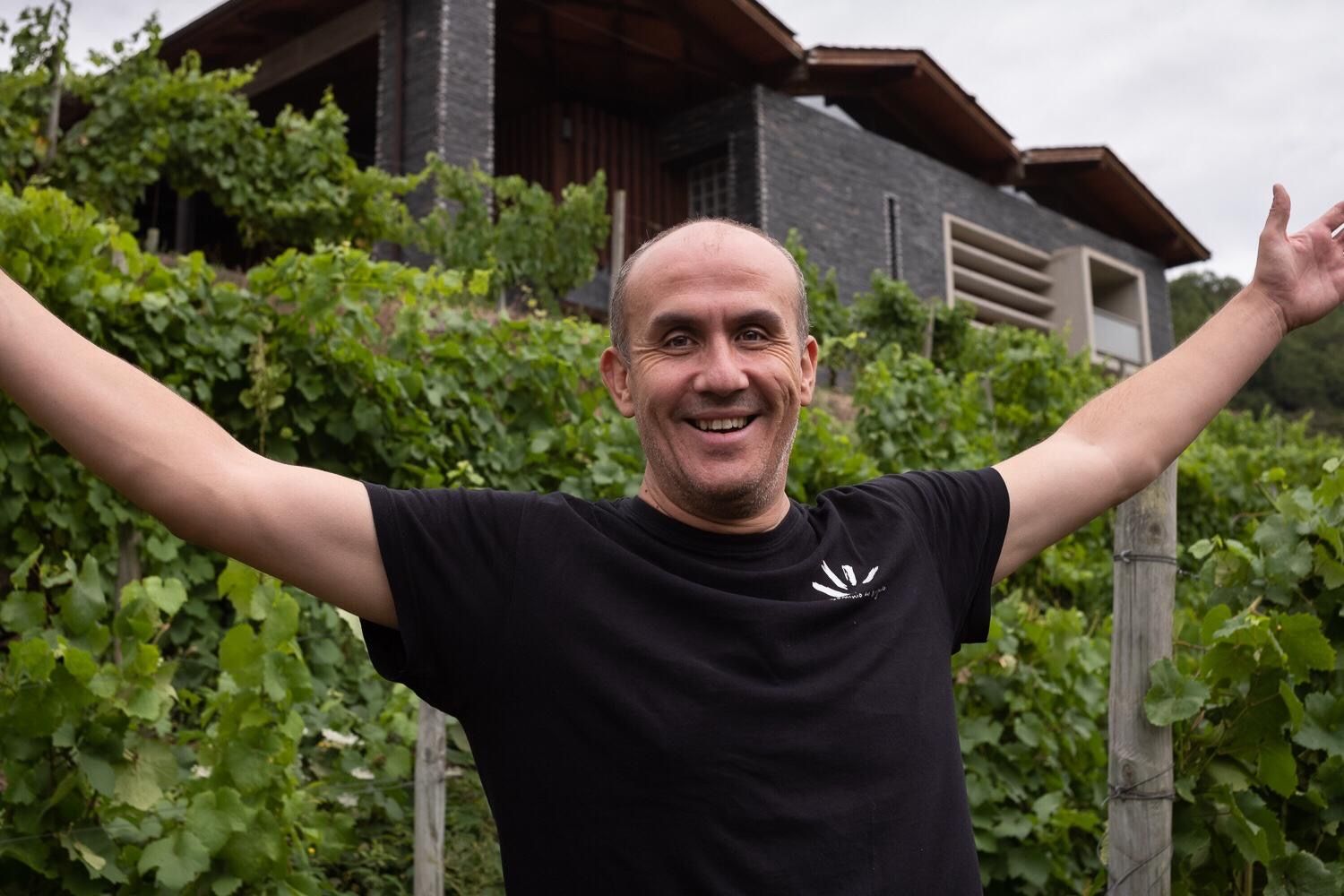
Can you tell me about your background - how you came to be a winemaker, and what influenced your style of farming and producing?
Up to 2006 or 2007, I was working as a general manager in international renewable energy. I was really into renewable energy, but I was getting tired of being a manager with the level of stress that came with it and I wanted to connect with nature in a deeper way. I had some savings and decided to quit that job so that I could think about doing something different. I thought about making cheese in Galicia with some friends, and I had always hoped for the opportunity to try and make even a little quantity of wine.
In 2008, I made wine for the first time - in a bucket! I bought 50kg of grapes and pressed them with my hands. After a few days, I had wine. Not the greatest wine, but I had wine. I was really curious about the winemaking process. I had friends making wine in Bierzo and I sat firmly on the drinking side of the business, but they were good friends who pushed me to start something. They shared their ideas with me, about being connected with nature and making wine with the utmost respect for the vines and for nature.
And you make wine not just in Asturias, but in Bierzo and the Sherry Triangle - which came first?
The first real project was in Asturias. As a drinker, I enjoyed freshness and complexity through minerality, and through structure and texture. Structure that comes from the work in the vineyard, and texture that comes from the ageing process. During a trip to France, I stopped in Asturias and discovered this wonderful place with marvellous vineyards and an opportunity to start something little. That was in 2009, which was the beginning of it all.
And from there, I'm from the south of Spain, so it was always on my mind to do something closer to home in the Sherry Triangle. I started there in 2015 with my brother, Fernando. And in Bierzo, I have friends who are always inviting me to work with them, so I've been doing that since 2018.
What would you say defines Asturias and the wines you make there?
When I think of Asturias in terms of wine, I think of something very fresh and very mineral, because of the climate, the greenery of Asturias and the mountains. We have a very long tradition, with records from the 9th century of monasteries with vineyards and making wine - always with local varieties. These include Albarin, Carrasquin and Verdejo Negro. We used to have a lot of hectares in the area, but in the 1950s, a lot of people abandoned agriculture and their vineyards in favor of mining, which was more lucrative. Now, there are 130-140 hectares across the region, with both pre-phylloxera vines and some new vines of local varieties.
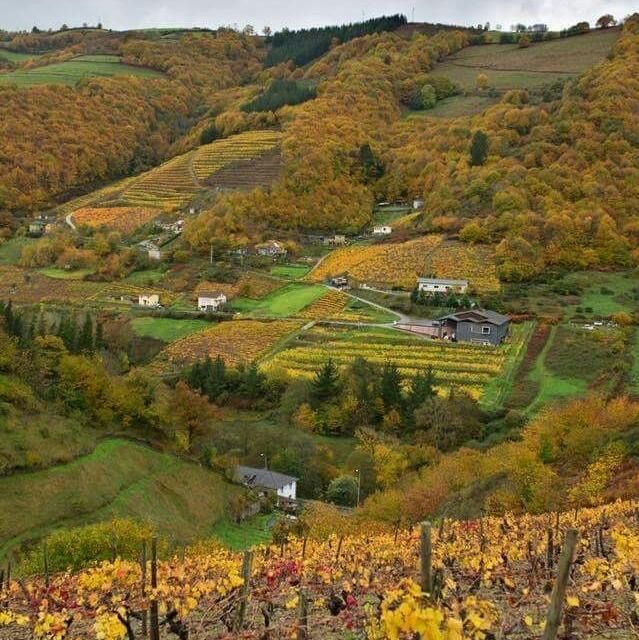
Can you describe the vineyard and its surroundings?
In Asturias, we're always in the slopes of the mountain. The altitude here ranges from 450-900m above sea level, but always in the mountains and with no flat surfaces. It's green all year long because of the climate and the landscape - mountains and forest with cattle and vineyards. But because of the slopes, the vineyards are all in little plots - we have 13 hectares of vines across 25 plots. It's very green - nature invades everything! We also have a lot of minerals, quartz and slate in the mountains. Higher up, you get the mother rock with big chunks of slate, and lower down, the slate becomes more degraded.
Can you describe the climate?
In Asturias in general, we have a quite cool and fresh climate, but where we are in the area of Cangas, we have a microclimate that's mainly continental with long cold winters and short warm summers, getting up to 30 degrees centigrade. As we are close to the Atlantic ocean, we have a strong influence from its cool winds.
Is there much of a natural wine scene where you are?
No way. We are the only ones here, as nobody believes in it. The winemakers here tell me I'm crazy and won't get anywhere doing it this way. Of course I respect the older winemakers, but when they see my vineyard with all the green and herbs, they say my vineyard is sick - but it couldn't be healthier! I think it's just a matter of time. They'll get there eventually I'm sure. Sometimes it comes down to fear - the risk is high and tradition means a lot here.
Which grapes have you used for La Fanfarria?
I use the white grapes Albarin, and Albillo. You can also find Albillo in some other areas in Spain, but this Albillo has been here in Asturias for almost 2 centuries. The percentage of each grape changes depending on the vintage - normally it's around 70% Albarin and 30% Albillo, but it can change depending on the vintage.
Can you talk me through the process of making this wine?
It's really important deciding when to harvest. Tradition says by mid-October you should begin harvesting, but that's tradition. From my experience, it can happen from mid-September to early November - for example in 2018, we started harvesting in the second week of November. It's hard to decide when, because rainy days can come and destroy your year's work, or you could harvest really early and in Albarin, have almost an undrinkable taste of lime in your mouth. You have to be meticulous in the vineyard and the moment of harvest is crucial.
Once we've decided that, we take the grapes in 12kg boxes to the winery. The grapes arriving to the winery is a huge moment for us, because once we have healthy grapes arrive into the cellar, we have our wine - so we celebrate! We open a few bottles and enjoy a drink together. Once we've celebrated, we destem the grapes and take them to horizontal pneumatic press for a very soft press, from which we normally get no more than half a liter for every kilo of grapes.
We take the juice to a stainless steel tank for a very slow fermentation to concentrate the flavors and aromas. It's a very simple process, done at a controlled temperature. We use indigenous yeast and wait for the must to begin fermentation - sometimes it can take 4-5 hours, sometimes it can take 4-5 days. Once the wine is completely dry with no sugar left, we let the lees separate through gravity. The clean wine, without lees, is transferred to a used French oak barrique. We keep the wine there for 3-6 months to allow the wine to rest and, after this, we bottle. We keep the bottles in the winery for another 3-4 months, so by the time it reaches the customer, it's ready to drink.
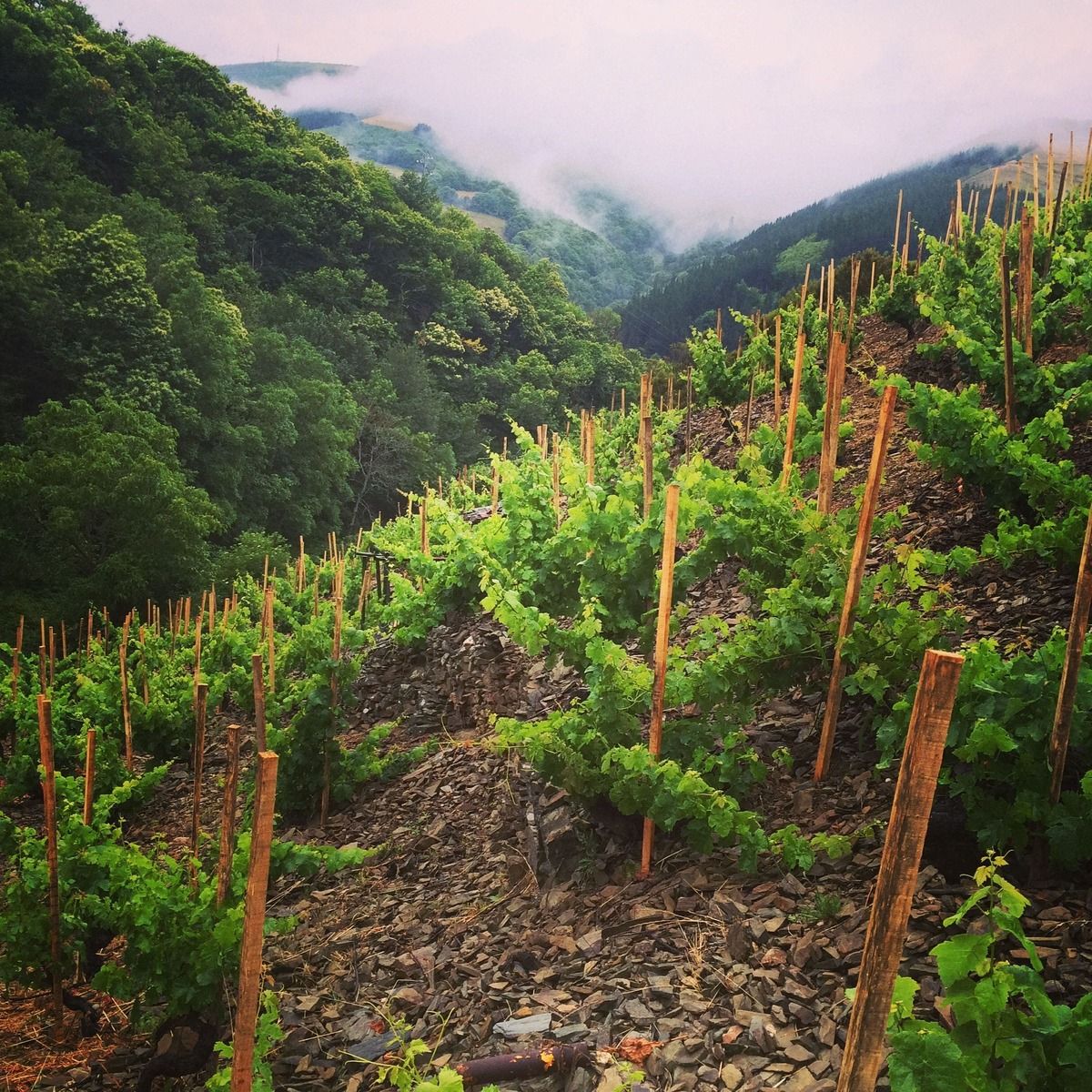
Do you use any sulfites?
Normally, we never use any sulfites during the winemaking process. But for some markets, we may use a little during bottling, if the importer requires that we do. We don't recommend it as we believe our wines don't need it, but it all comes down to the importer.
How would you describe the wine?
It's an entry level white wine for us - a wine that a first-time drinker can enjoy because of its freshness and fruitiness, but also a wine that more experienced drinkers can enjoy because of the salinity, minerality and complexity. The aromas are quite delicate, with subtle hints of almond and white blossom. Because of the wine being on the lees for some time, you get a little creamy texture as well. It's quite delicate and fresh, and represents Asturias quite well.
How does this vintage, 2020, compare to others?
In 2020, we had a perfect year. Everything went as well as we could have hoped, but really close to September, we had an attack from mildew and our total production was reduced substantially, but the quality remains high. As a result, we achieved a very well balanced wine, in terms of acidity and texture. It's fresh, but with a lot of finesse. Very enjoyable in the mouth. We're really happy with the 2020.
When is it best enjoyed? Now or later, if people want to age it further in the bottle?
The wine is ready to be enjoyed now. I've opened several bottles myself and enjoyed them very much, but because of the structure and high acidity, it could last in the bottle for a fair few years more. We haven't been able to open very old bottles yet, but I opened a 2014 a week ago and it was wonderful - same with a 2015 that I opened when I was over in the United States - really beautiful to drink. So, I'd say that our wines can last long in the bottle, but this one I know people will enjoy now.
What’s the story behind the name of the wine, La Fanfarria?
La Fanfarria is a name they give in Asturias for a group of friends that go out, play music and drink wine. I thought it would make for a fantastic, very local name. And the concept is what I make wine for. To be with friends, to laugh, to be happy, to hug each other, to talk and to play music. That's La Fanfarria.
Any food pairings you’d recommend?
Normally, I enjoy it very much with oysters and fish dishes. But we also have a lot of quite strong flavored dishes here, like stews with lentils or chickpeas. I recently paired a chickpea stew with La Fanfarria. The concentration and strength of the stew paired well, because the wine helped to clean the palette between mouthfuls. It was mind blowing - I never thought to pair a wine like this with a dish like that. Also because of the good price, I drink it as an aperitif.
Isabelle's thoughts on La Fanfarria - Asturias, in northern Spain, is a green and luscious land thanks to its Atlantic coasts and ample water, and La Fanfarria really does match its leafy mood. Lean and easy drinking, it has aromatics of blossom, lime and verbena as well as a dash of iodine for good measure. Zesty, with some sweet spice from its ageing in oak, it has a lovely, creamy texture.
TOTAL SULFITES: 16 mg/L
Christophe Lindenlaub, En Equilibre, Alsace, France, 2021
Christophe Lindenlaub is a winemaker who runs his family's historic estate in Dorlisheim, Alsace. The estate stretches across 12 hectares of vineyards, which Christophe converted to organics to make wine in the most natural way possible.
Q&A with Christophe Lindenlaub
What's your family history of winemaking, and at what point did you know that you would follow in their footsteps?
We are a farming family with origins growing corn, vines and other things. My father was the first to specialise in the vineyard and began bottling our wine in 1986. In 1999, I started working in the vineyard. Because I was born into it, it felt natural for me to follow in my family's footsteps. I found it interesting to see the vegetables grow and watch the transformation process of the grapes.
I believe you were the first in the family to convert the estate to organics. Where did this come from and why was this important to you?
We are organic certified and also use biodynamic practices. It felt like a natural choice - I see the plants, soil, birds and animals, and it's important for me to respect them. It also makes the wine better, it feels cleaner and with a greater quality. It was a logical decision for me.
What other changes have you introduced?
As well as converting to organics, I adapted the vineyard with other growing methods. When you have sickness in the vines, you can either add sulphur or find other ways to extract the plants. For example, we make tea and oils from the plants we can't use for wine. We also seed the soil a lot using a method called rollofaca, where we allow the seed to grow roots to help retain the soil's moisture. It creates a better growing system.
Can you tell me about Dorlisheim?
Dorlisheim is a small city with around 2,500 people. It's a very nice city, with a lot of wine growers and farmers. Industry is also very important - Bugatti cars are made here!
All the vines are on the hills. We have a good exposition with around 200 hectares of total production. Our vineyard is half in Dorlisheim and half in the neighbouring city, Mutzig.
Natural wine has developed enormously in Alsace - where do you think this development is coming from?
At the very beginning of the movement, we had four fantastic people who were the precursors - Meyer, Binner, Schueler and Frick. In 2012, more people started making natural wine and, at first, it was like they were martians! People didn't understand what they were thinking or making, but after some time, other winemakers started trying them. The first try you feel a little lost, but once you taste it a couple more times, you start to enjoy and appreciate it, and realise that wine can be more interesting without sulfites. So it's grown since then. People are more open minded.
Can you describe the vineyard and its surroundings?
We have four different hills in Dorlisheim and a nice large open plain of approximately 70km. You can see Alsace Valley, Strasbourg, the Black Forest. We are in the middle of the plain. A long time ago, there was a big mountain, but volcanic eruptions caused it to collapse. Because of this, we have a lot of different soils. Alsace soil is one of the biggest mosaics of soil in the world, with granitic, loess, limestone, schist, volcanic - a lot of different styles - so it's a very interesting place. It's also one of the driest regions of France. Very hot and sunny in summer and cold and snowy in the winter. Now though, with global warming, we have less snow than we used to.
How many hectares do you work with?
We have 12 hectares.
What soils do you have?
We have two types: in Dorlisheim is more clay and less limestone, and Mutzig is more limestone and less clay. For both soils, the mother rock is sandstone.
What's the average age of your vines?
We have older plants but the average is 20-25 years.
Which grapes have you used for En Equilibre and what soil are they grown in?
It's Riesling from the Mutzig hill with majority limestone soil. It's also from the highest parcel on our estate at around 300m above sea level.
Can you talk me through the process of making this wine?
We harvest the grapes and direct press with whole cluster. After pressing, we put the juice in a stainless steel tank - which we use for the full process to keep the youngness and freshness of the wine - and keep it fresh for a day to slow the fermentation. This is really important to allow the juice to settle. Then, we allow it to reach 12 degrees centigrade to begin the fermentation. Length of fermentation differs when you use natural yeasts, but in 2021 it was finished in three weeks. If fermentation is too long, you risk having problems with bacteria, and if you have a shorter fermentation, you're at lower risk of these problems. After fermentation, we keep it for approximately eight months. Again, this can differ, but if you want it fresh and juicy, you bottle in May to July. We keep the wine on the lees as long as possible, so they're separated just before the bottling. And we bottle without sulfites or other additions. Because of this, you can get a little sediment in the bottle, but we like it and it helps stop the oxidation.
Do you always avoid sulfites?
Not always, but most of the time. When you work naturally, there's a lot of differences in each wine. If the wine needs it, we will use it. But if it doesn't, why would you add something it doesn't need? So most of the time, we avoid it, but I'm not totally against it.
How would you describe the wine?
2021 is very interesting. It was an especially fresh year with a lot of rain, so the wine has a lot of freshness and acidity, which brings a citrus side to the wine, as well as having a nice minerality.
How does this vintage, 2021, compare to others?
It was very different. In recent years, it's been very hot and sunny with full maturation, but 2021 was more grey and rainy. It was harder in the vineyard - with some sickness in the vines, so we had to be very precise and careful - but it was perfect in the cellar.
When is it best enjoyed? Now or later, if people want to age it further in the bottle?
You can drink it now and it'll be very interesting, or you can keep it for 5-10 years. If you drink it now, it'll be younger in style, fresh and fruity. If you drink it in 5-10 years, the other aromas will come through and it'll be more mineral.
What’s the story behind the name of the wine, En Equilibre?
The translation is 'In balance'. This parcel brings us a nice, balanced wine with good acidity, but a fruity side, which is also really important. It's a very good balance.
Any food pairings you’d recommend?
It's an interesting wine to pair with Alsatian specialities, and seafood, fish or white meat.
Isabelle's thoughts on En Equilibre - Alsace is home to an energetic natural wine movement of which Christophe is very much a part. This inspiring Alsatian makes soulful wines, and his riesling is no exception. A delicious combination of weight and texture, expect hints of smoke, a fresh minerality, a great salinity and notes of baked quince, crunchy white peach and lemon.
TOTAL SULFITES: <10 mg/L
Bodega Murga, Quebranta, Pisco, Peru, 2020
Bodega Murga is an estate in the historic Valley of Pisco, Peru, run by Pietra Possamai who makes wine, pisco and mistela. They work only with Peruvian criolla grapes, also know as pisco grapes, grown and produced without chemicals and with respect for tradition.
Q&A with Pietra Possamai
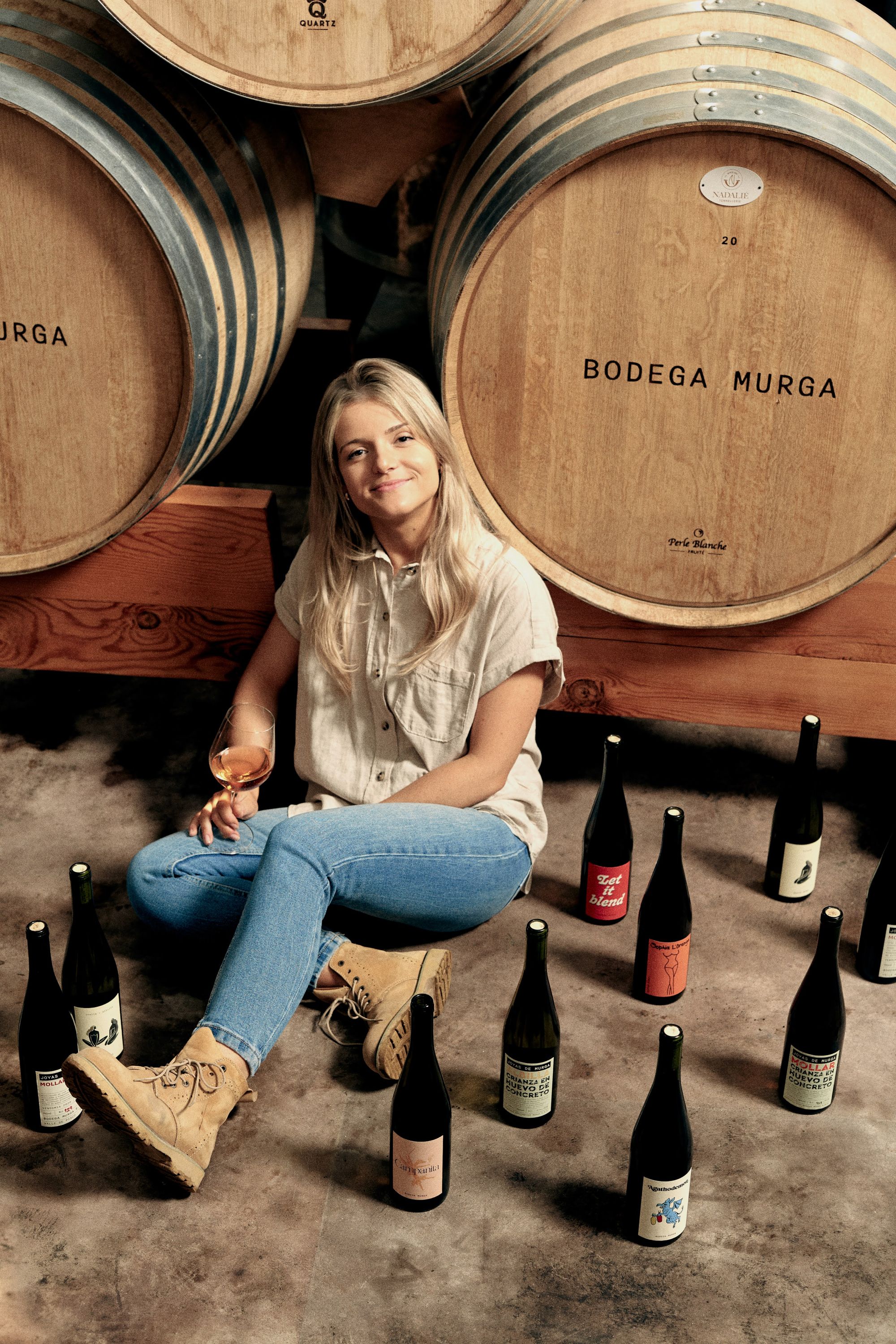
How did you come to be a producer of wine, pisco and mistela? Is it something that has been passed down through family?
I am Brazilian, from the state of Rio Grande do Sul in south Brazil. My city Bento Gonçalves is in the Serra Gaúcha wine region, known as the capital of Brazilian wine. Wine was very much embedded into our culture. You would go to high school in the morning and attend enology and viticulture classes in the afternoon. After that, you could decide if you wanted to continue to study winemaking at university, which I chose to do.
But I don't come from a winemaking family - my mother is a hairdresser and my dad is a salesman. I have a lot of friends and winemaking colleagues back where I'm from, who come from winemaking families and learned from their grandparents. I've been in Peru with Bodega Murga since 2019, but I have been making wine since 2015 - nearly 10 years now. I'm really proud of that. My first foray into natural wine was in Brazil, but now I make natural wine in Peru using pisco grapes.
Why Peru?
In 2019, I started to think about trying something outside of Brazil, but I didn't know where - just that I didn't want to go anywhere with a big winemaking tradition. I had a boyfriend at the time who was a chef, living and working in Peru for a few months of the year. It was a coincidence really. I was searching for somewhere new and he just so happened to be working here. Without the boyfriend, there would be no wine!
Can you tell me about the Valley of Pisco, and the grapes, climate and traditions that define the region?
Pisco Valley is three hours south of Lima. It's a coastal region - we're 25 to 28km from the sea, so really close by. It's an ancient valley and in the past it was very significant, but has become less so over the years. We're an hour and a half away from Ica, another historical valley and wine region that's full of Peruvian history and has grown in popularity. We have a ruin nearby that was a principal resting place for the Incas when they came down to the coast, so we're hoping that the historical and cultural significance of the Pisco Valley is restored.
There's not a huge quantity of grapes here - there are one or two other producers in this region. The climate is very dry and we have a strong wind that comes in from around 4-5pm until around 7-8pm, which helps a lot with the vineyard, because it keeps the grapes dry and imparts a strong marine and salty character to the wines.
Is there much of a natural wine scene in Peru, and do you see this growing in the future? Is the climate good for organic viticulture?
Right now, we have two or three natural wine producers in all of Peru, as well as a natural pisco distiller. The climate is well suited to organic viticulture - of course, there's a lot of rain which can make it hard, but here the climate is perfect.
We work organically, but we don't have the certification because we're a young winery and it's expensive - at this point in time, we'd rather invest our money into the winery than the certification. I don't see the natural wine scene growing so much, but I do think more people will start making wine from pisco grapes.
Why is that? What do Pisco grapes offer winemakers?
Pisco grapes offer a lot of new possibilities for people to mix classic grapes with Criolla grapes. It's a new wave of winemaking. It all started in 2015 or 2016, when a group of four friends, passionate about Pisco the spirit, set out to make very high quality pisco - a much higher quality than what was available on the market. They were also big fans of natural wine and started promoting the use of Pisco grapes to make wine. They did a small batch vinification in 2018 and we started working together in 2019. It's lighter in body, not so high in alcohol and the flavors it offers are really local. It's a true expression of the terroir. We're excited to stay on this path of making natural wine with Criolla grapes and skin contact.
What grapes do people typically work with in Peru?
Peru's plants tend to be quite young - they grow a lot of leaves and produce a high quantity of grapes. Our youngest plant is four years old. Typical production is around 20-35 tonnes per hectare, but we're working with 13-19 maximum. It's a very significant difference.

Can you describe the vineyard and its surroundings?
Our vineyard is very close to the Pisco river, a very important river in the region, and the soil is predominantly stone and sand. There's a lot of sand because we're very close to Deserto de Morón. We work with six of the eight grapes from Pisco: Mollar, Negra Criolla, Quebranta, Albilla, Italia and Moscatel.
How many hectares do you work with?
Right now, we have 24 hectares.
Can you tell me about the grapes you've used for Quebranta Ros?
Quebranta is a sort of cherry, coral colored grape. It's 100% Peruvian and you can only find it here. I'm fascinated by this grape. It's a crossing of two others: Mollar (known as Negramoll in Spain) and Negra Criolla (known as Listan Prieto in Spain or Pais in Chile).
Can you talk me through the process of making this wine?
In 2019 we did a very small batch of this wine and loved it, so in 2020 we were excited to make it again. We only made 750 bottles of this wine. We harvested the grapes in February by hand and took the grapes to the cellar where they had 32 days of skin contact. We then fermented with indigenous yeasts for 8 days, before ageing for 5-6 months. This full process takes place in stainless steel. It then has another 5 months in the bottle before going out to consumers.
Do you use any sulfites and what are the total sulfites per liter?
I use sulfites during bottling and it ranges from 4-12 parts per million, depending on the wine. Total sulfites for this wine is 11mg/L.
How would you describe the wine?
It's a very unique and smoky wine. I know the place where it came from, so it's easy for me to drink it and see the colour of the sand and smell the crisp, salty air in the morning. There's a lot of peach flavor, damascus and yellow plum. The alcohol is 12% and one of our most alcoholic wines - the others are very low in alcohol. And most of all, it's a very versatile wine. It works alone, with vegetables on the grill or with heavier dishes like risotto. At fairs it's one of the wines people rave about and say they've never tried a wine that's so salty or so smoky. It's really nice to hear.
How does this vintage, 2020, compare to others?
The 2019 was the first vintage I had with Bodega Murga. It was a challenging experience because it was my first time working in Peru and my first time working with these grapes, so I was relearning almost. 2020 was also challenging but in other ways, because of the pandemic. That's why we harvested two weeks before we usually do. 2021 was a great year. 2022 has been my favorite year so far - everything was perfect. 2023 was very challenging in terms of climate, as we had rain which we never normally have. But so far, so good.
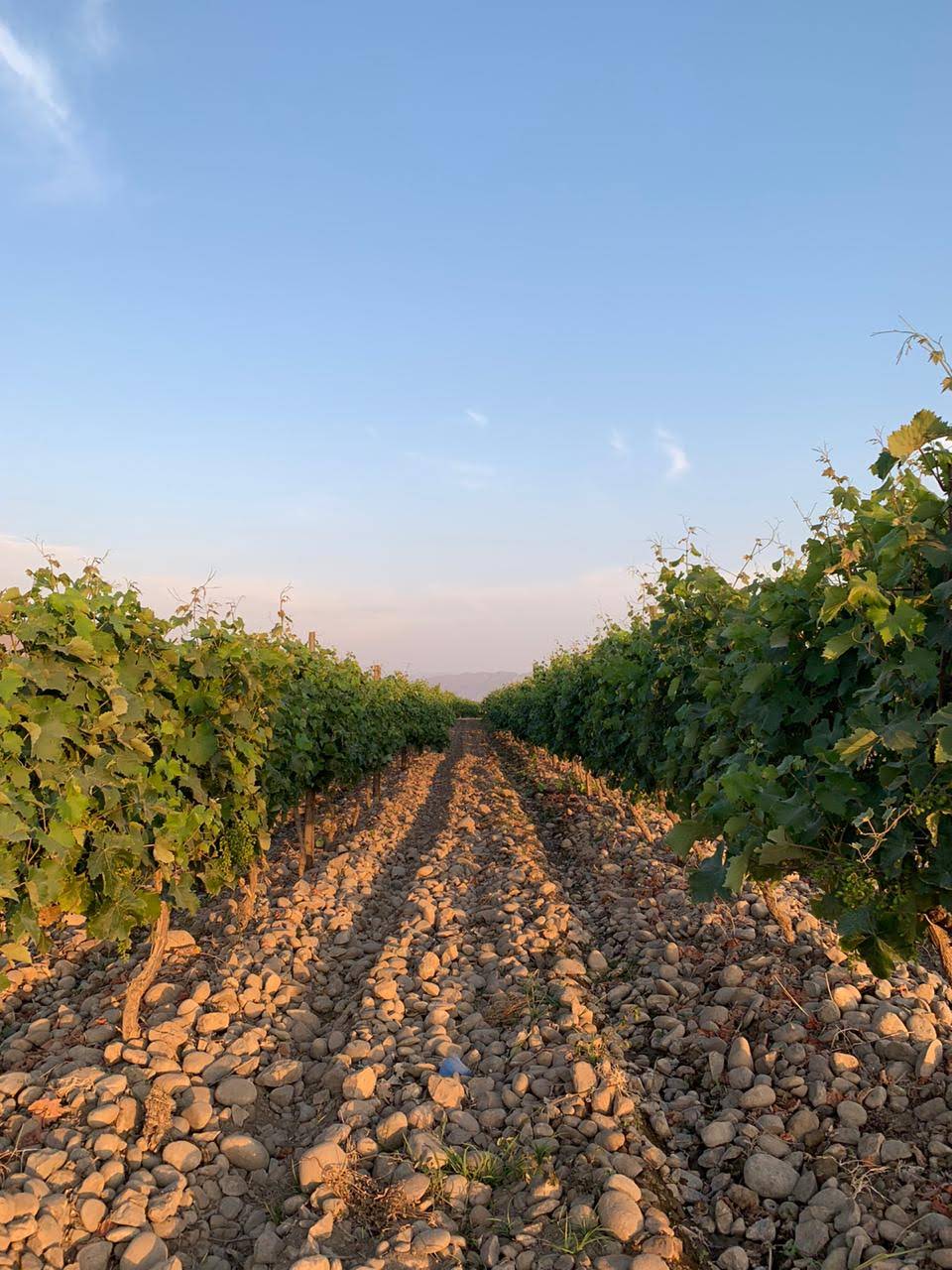
When is it best enjoyed? Now or later, if people want to age it further in the bottle?
All our wines are young, and in their right moment to enjoy.
Any food pairings you’d recommend?
It works well with bittersweet foods. We have a lot of fusion here with Asiatic and Peruvian cuisines, with a lot of soy sauce and bittersweet flavors. It always works well with these kinds of flavors.
Isabelle's thoughts on Quebranta - This fascinating wine is made from Quebranta, a Criolla grape unique to Peru that has traditionally been used for the production of Pisco. Originally brought over by the Spanish conquistadors, the grape has evolved over centuries to become a perfectly adapted and indigenous Peruvian fruit. This rosé is a wild combination of flavor. Smokey and salty, it has hints of rose water, Lucuma and pink grapefruit.
TOTAL SULFITES: 11 mg/L
Milan Nestarec, Nach, Czech Republic, 2021
Milan Nestarec is a family estate in Moravia, Czechia, that produces wines using manually harvested grapes which have been fermented spontaneously.
Insights shared by Milan Nestarec
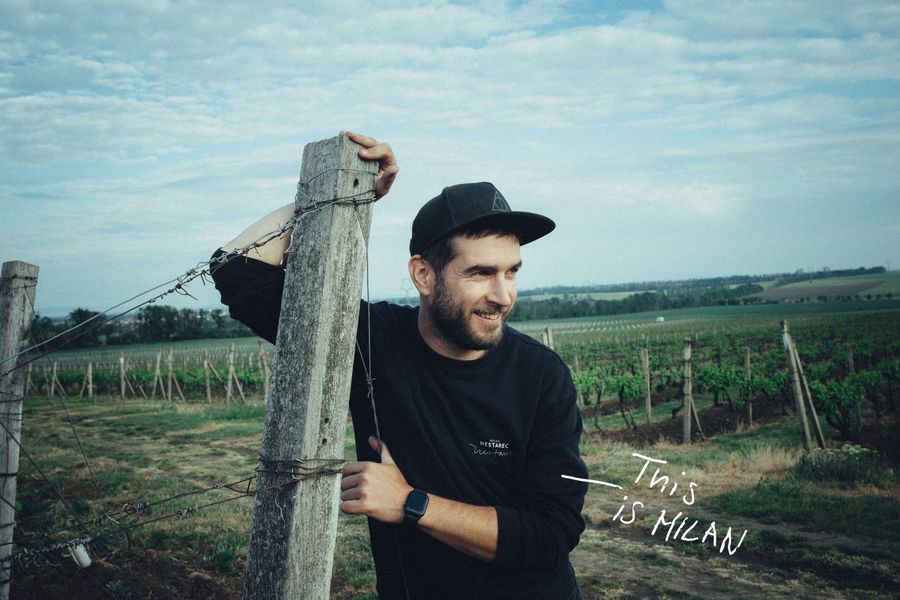
Can you tell me about your background - how did you get into the world of wine?
The first vines my family started to work with grew on a tiny plot that was returned to us as restitution in the early 1990s. The winery went professional in 2001. My father, Milan Nestarec Sr. entrusted me with all the winemaking when I was 16 years old, which makes me quite an experienced winemaker by this point! The vineyards and cellar switched to organic and low intervention in late 2008, inspired by multiple encounters with natural winemakers at home and abroad.
What's your philosophy in the field in the cellar?
The current focus of the winery is to go to great lengths to care for old vineyards and keep the energy in the bottle.
Can you describe the vineyard and its surroundings?
We work with 24 hectares of organic certified vines, using regenerative agriculture. The soil is mainly loess and clay, with some sandy plots. We grow Gruner Veltliner, Neuburger, Pinot Blanc and Muller Thurgau for the whites, and Blaufrankisch and Pinot Noir for the reds. We produce around 75,000 bottles per year.
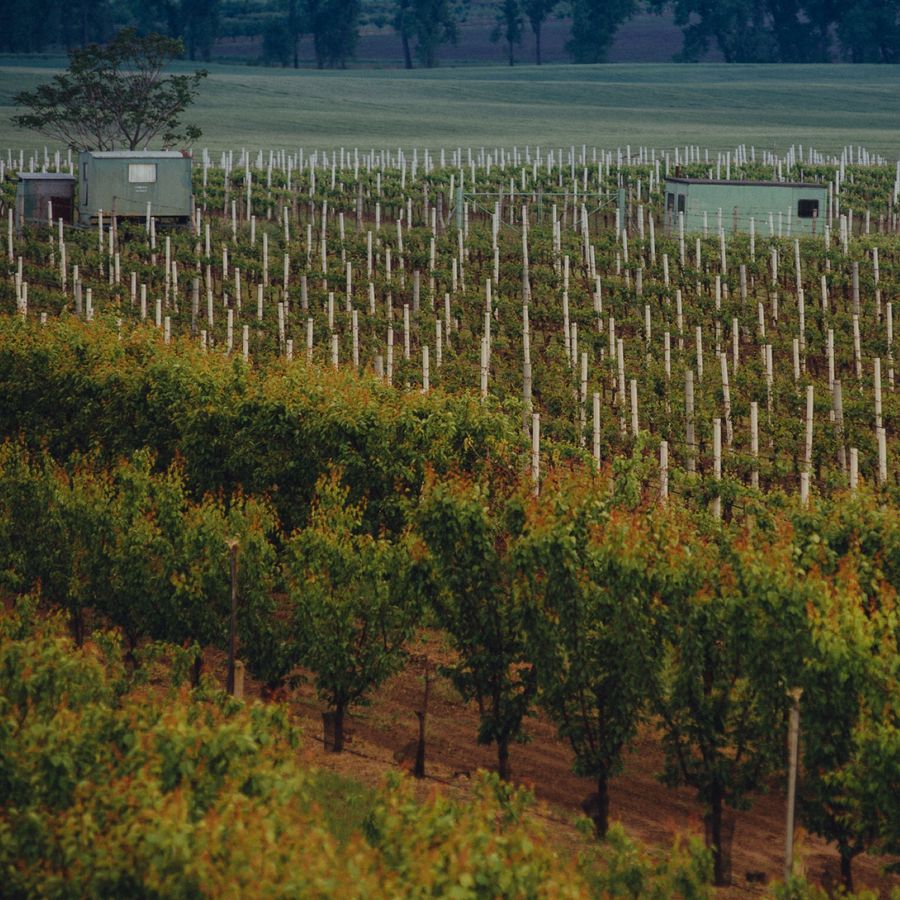
Which grapes have you used for Nach?
Blaufrankisch, Portugieser and Pinot Noir.
What's the process of making this wine?
The grapes are harvested manually in October and sorted by hand at a sorting table, destemmed and uncrushed. Following a gentle push in the pneumatic press and free-run juice, we use spontaneous fermentation with 21 days in open top vats with regular, gentle remontage. We age in stainless steel. Throughout the whole process, we use only wild yeasts and no fining, no filter, little to no sulfur.
How would you describe the wine?
Moravia, my home, has the perfect conditions for making light-bodied, fun reds with good acidity. This unpretentious 'rural realness' used to be the traditional style here, and I’ve been drinking and loving wines like this since I was a kid. Obviously, our region also had to go through the craze of new oak barrels, de-acidifiers, tannins and all the other BS covering the sense of place in our wines when the Czech Republic opened its borders after 1989. But I wanted to put the normal, juicy Moravian red, based on our signature Blaufrankisch grape, back in the spotlight. So voila - Nach, named after its colour, purple in Czech.
How does this vintage, 2021, compare to others that you've had?
The slowest harvest I remember, with a big surprise at the end. Due to cold spring, the bud break came two weeks later than usual, a delay that the vines didn’t catch up with. Plenty of rainfall throughout the year, so a lot of fungal disease pressure. End of August looked grim – the grapes had 15 g/L of acid, no sugar or signs of ripening. But, come mid-September, the weather suddenly made a 180-degree turn and the sun shone until the end of October. We usually pick fast, as all the grapes ripen mostly around the same time. In 2021, however, everything ripened gradually, and some days we even nervously sat around without anything to harvest. On the flip side, we had time to bring the bunches to perfection. Especially the late varieties, which brought us well-deserved satisfaction – I have never seen more beautiful grapes of Blaufrankisch. Excellent vintage, after all.
Isabelle's thoughts on Nach - Nach, aka ‘purple’ in Czech, is bursting with purple fruit - damsons, ripe blueberries, black currants - as well as hints of blood orange. It is a gorgeously juicy, supple, light-bodied, red wine that works well chilled as it has very light tannins.
TOTAL SULFITES: <10 mg/L
Voï, 'Xenios', Greece, 2021
Voï is a project in Greece's Rapsani PDO appellation on Olympus mountain, run by Jason Ligas. Jason Ligas is a pioneering winemaker and son of Thomas Ligas of Domaine Ligas in Pella. Since growing up on the family estate, he has run various projects across Greece, including Voï.
Q&A with Jason Ligas

Can you tell me about your background, including your experience with the family winery and your projects since then?
I studied in Champagne when I was 16 years old. From there, I started working with my father in Pella at the family winery, Domaine Ligas, and studied enology and viticulture. After I graduated, I went to Paris to work as a sommelier and wine trader. I then took over the family winery 100%, before stopping that to run projects to save older vineyards in Greece - in Tinos island, then in Naoussa, then near my family estate, and then Samos island.
Now I'm in the Rapsani appellation on Olympus mountain, where I'm finishing my big tour of collecting, preserving and producing wine from rare vineyards and regions. This takes up most of my time - I like to be 100% in the vineyard and the winery and I have a team with me, but the amount of work that I have, doesn't allow me to focus on other projects. I'm working with old vines, which I have to restore, rebuild and create from scratch, so it doesn't allow me the time to do much else. My sister has been running the family winery since 2016, and I have a small presence in Samos with one project, but working with very small quantities as a supervisor.
In what ways has your approach to wine growing and making evolved over the years?
My father raised me with his two brothers in the winery. One of the main things I learned during that time is that, when it all comes down to it, you are working alone. This work is not quick or easy to understand, but you have to show the path so that others can follow in your footsteps. It's almost like a monk's life - you're focussed towards a goal and of course you have people to help you reach it, but ultimately you are by yourself. Its a great thing to learn because it gives you a sense of power and self-respect, but it's not easy.
Over the course of 10 years, I saw so many things change economically and politically in the wine world. As a young man, it was a shock. I was born in 1989 and saw analogue systems turn to digital, and now it's evolving again. It wasn't easy to gain respect, but I feel lucky to have lived through this time and have very good memories. All these different things help you grow, make you stronger and make you a more sensitive winemaker when it comes to the quality of the vines, to the old vineyards and to the story that the old ones pass onto us. I'm more strong to be able to continue my work and am dedicated to thanks to background in wine from the age of 16 years old.
What - or who - would you say have been your main influences?
It's a group of people - a society of different people and personalities. My father and his brothers. My father gave me an open minded way of working. He taught me that every problem has a solution. My mother helped me see the world differently in terms of culture, as she was half-French and half-German. When I studied, Jacques Selosse was one of my biggest influences - a god, teacher, father figure and gatekeeper of knowledge who taught me so much. And a number of different old wine growers who I met back in France and Greece, showing me the way of older vineyards and techniques. It's not necessarily any individual who's influenced me more than others, but a group of people who showed me respect, gave me strength and helped me up.
Can you tell me about the Rapsani appellation, and the grapes, climate and traditions that define this region?
Rapsani is a region north of Greece and southeast of Olympus that sits between two mountains and is crossed by the river Pineios, facing the Aegean sea to the east. It's a very old appellation, based on three grape varieties - two are unique and exist only in this appellation. They are Xinomavro, and the two that exist only here are Stavroto and Klassato. Including myself, there are five winemakers here. Around 30 years ago, there were 11-12, which is why I came to this region not far from my birth town, to keep these unique grapes alive. The region is rocky with vines grown in terraces and mostly manual work. We have a microclimate of cool winds from the mountain and smooth salty breeze from the sea, with rocky schist soil. It gives you these fresh, salty red wines and very elegant, gastronomic rosés. It's not easy to work with, but the wines are very unique.
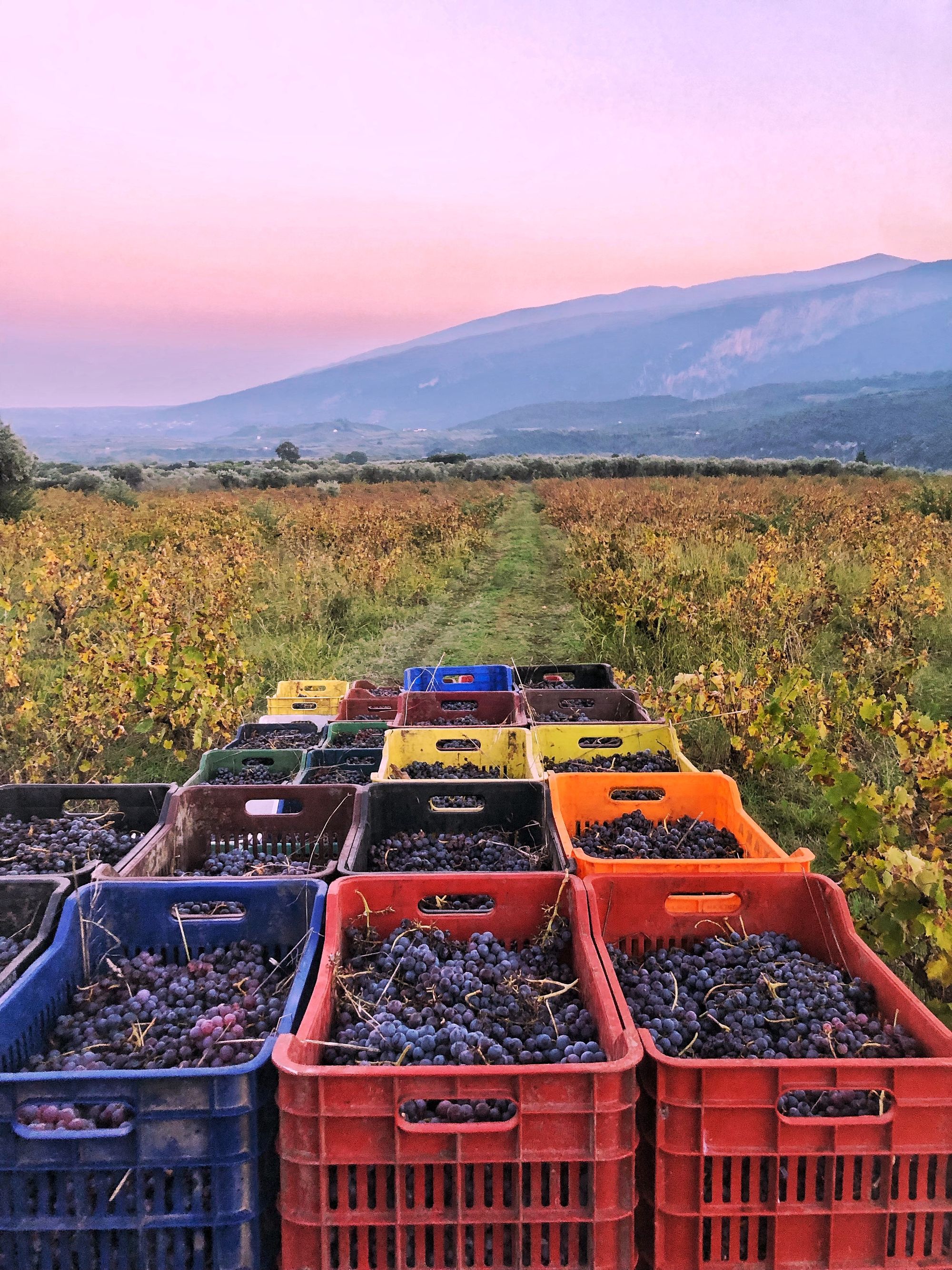
Is there much of a natural wine scene on and around Mount Olympus, and do you see potential for growth?
I'm the only one working this way in the region and in Greece we have few. Most people here work using organic farming, because of the landscape and it being mainly human work in the field. They don't use any high concentration of chemicals. The potential for this region is high due to the quality of vineyards and the microclimate, but the issue is manpower. It's about getting young people to work in the vineyards by hand - they prefer to work on a tractor. This is why I want to show good ways of working and good results, to attract young people back to this artisan way of working, mixing technology, tradition and knowledge.
Are you looking for more vines in other regions?
For now, Rapsani is my main goal. I have some projects on the horizon that I want to bring into my schedule, all local grapes again, on islands and with the aim of preserving the region. I'd like to do a second winery, a boutique winery that connects the mainland to the islands, and with a school that helps to brings new blood into the wine growing and making business. I'd like to have someone to work with me and continue my work.
What is Voï about, for you?
Voï in Greek is a piece of a word that forms 'voicia', which means the holy help. It can also mean a raw, deep voice that comes from the gods, from the soil or from your soul. My goal was to show that my presence in the holy mountain of Greece, in a rocky appellation that nearly got lost, has an everlasting voice. To give a second chance to the region and preserve it as a protected appellation. It means that something's coming from deep down in the earth for the people - Greek people, people in the wine business and people worldwide.
Can you describe the vineyard?
I have six hectares of different gardens - I call them gardens - six small vineyards of a hectare each. All these gardens are across three vineyards, separated not by blend or soil type, but by altitude. Each altitude has a red, rosé and white (blanc de noir). I had three years of strong cultivation and think about how to best manage the vines and offer a new form of viniculture, using permaculture and biodynamic methods. My goal is to create balance in the old vineyards and give them a second chance.
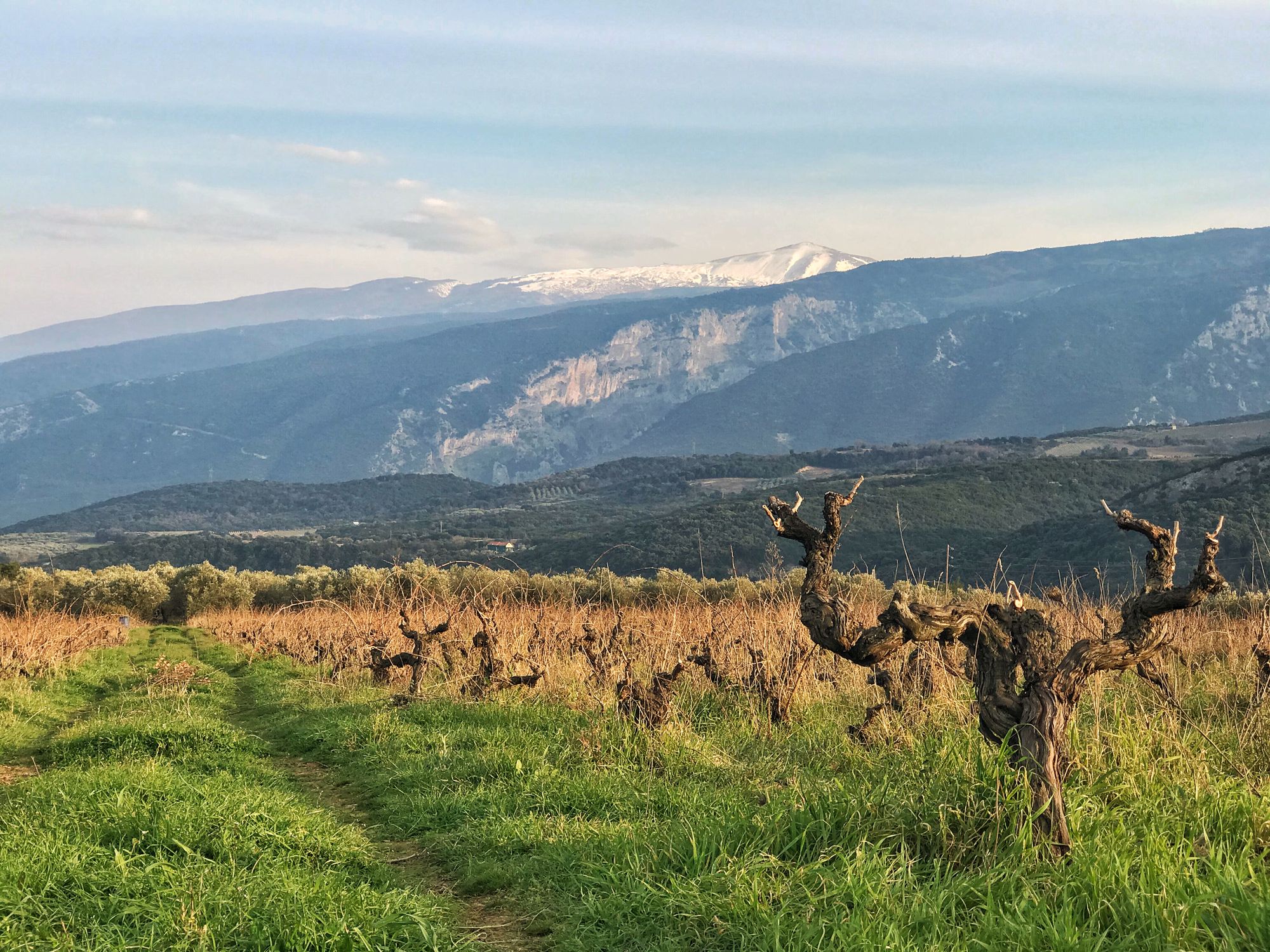
Which grapes have you used for Xenios?
This is a strange wine for me. An old winemaker saw the way I took care of my vineyards and gave me his so that he could rest. It's a beautiful vineyard, but strange for me because it has a non-local grape variety - Syrah - and I always work with local grape varieties. I'm like the Marine Le Pen of grapes, I don't like grapes not from my place. But I worked the vineyard for a year to allow him some rest, and I made this wine. Xenios means 'the stranger', or the guy not from round here - but in a good way. I learned to love and respect this grape. It's my first and my last vinification of a non-local grape. It's a red that has 32 days of skin contact and ferments in barrels. I don't use any additives. 2021 was a warm summer, with very cool nights that gave me this freshness which is unusual for a Syrah, that's normally very heavy or iron-y.
Can you talk me through the process of making this wine?
We normally harvest in October or November, sometimes December. For the Syrah, though, it's September. I go to the vineyard and check the stems, the crunchiness of the skin and the seed. I need to feel that the last organ of the vines - the seed - is crunchy and brown. I'm not checking the alcohol or pH or sugar concentration or acidity. For me, a well balanced grape can be found when you taste it, and with experience of course. After that, I organise the team to harvest early in the day, stopping around 1-2pm.
We take all the grapes to the winery in the village of Krania, where my very old building is. It's at 655m altitude and cool at night, around 12 degrees. The next morning, we press and destem. After that, I don't touch the tank. The grapes go in 50% whole bunch and 50% crushed. I leave them for around 30 days and every few days, I taste the juice. I don't care about alcohol level or oxygen level, I let the wine do the work by itself. My philosophy is to take minimum action with maximum effect. When it's ready, I move the juice with gravity to old 100L barrels. I let them pass the winter and spring in there, tasting it at times to see the evolution. Normally, just before harvest comes again, I bottle it up to receive the new year with intention. I keep them a few months more in the bottle, then ship to my importer.
Do you use any sulfites and what are the total sulfites per liter?
I don't use sulfur. I don't need it as the yeast produces a little natural sulfur by itself. I also don't fine the wines as everything happens by itself and builds its own protection. It's how it was done in the past. Every house had a big barrel and they didn't care about these things. The microclimate and rocks help me a lot to preserve the wine.
How would you describe the wine?
Xenios reminds me of maturity and of chocolate bitterness, which I'm in love with. But it's also full of this rocky freshness. It feels as though you're thirsty from hiking, drinking spring water and eating a 100% cacao piece of chocolate without sugar. It's gives that freshness and minerality, with a bitterness and breeze, very refreshing. It's a unique Syrah in that the grape can produce a high level of alcohol, but this is a very elegant expression.
How does this vintage, 2021, compare to others?
2021 was very balanced with a warm summer and cool nights. Cooler than other vintages. 2020 was more sunny with less cool breeze, 2022 was hot with no winter at all and 2023 was very difficult, very loud in humidity and unbalanced in terms of climate. I felt the climate change presence in 2023, 100%.
When is it best enjoyed? Now or later, if people want to age it further in the bottle?
You can drink it now and it will be more fruity, but with time it will become more interesting. You can give it five years easily. When a wine is well done, you can taste it now or in future. It doesn't need time to be better, it needs time to be different.
Any food pairings you’d recommend?
The pairing I like is lamb chops barbecued simply with lemon and a little salt, served with pesto and tomatoes. It also works well with beetroot cooked with garlic, basil and tomato. It's a summer red wine for me.
Isabelle's thoughts on Xenios - This is the first vintage of Jason’s latest adventure vinifying Syrah grown at altitude on the slopes of Mount Olympus in Greece. Xenios is more akin to a northern Rhône Syrah than a Mediterranean expression of the grape. It is elegant, fresh, pure, spicy and floral, with hints of violet and herbs of the south (wild rosemary and fennel seed).
TOTAL SULFITES: 6 mg/L
Domaine Houillon, Indigo, Rhone, France, 2020
Domaine Houillon is an estate in the in the Côtes du Rhône run by Aurélien and Charlotte Houillon. They make wine using the late Jules Chauvet's winemaking approach - Chauvet, a wine négociant who worked at La Chapelle-de-Guinchay in the Beaujolais, has been coined the 'Godfather of natural wine'.
Q&A with Charlotte and Aurélien Houillon (Charlotte translating)
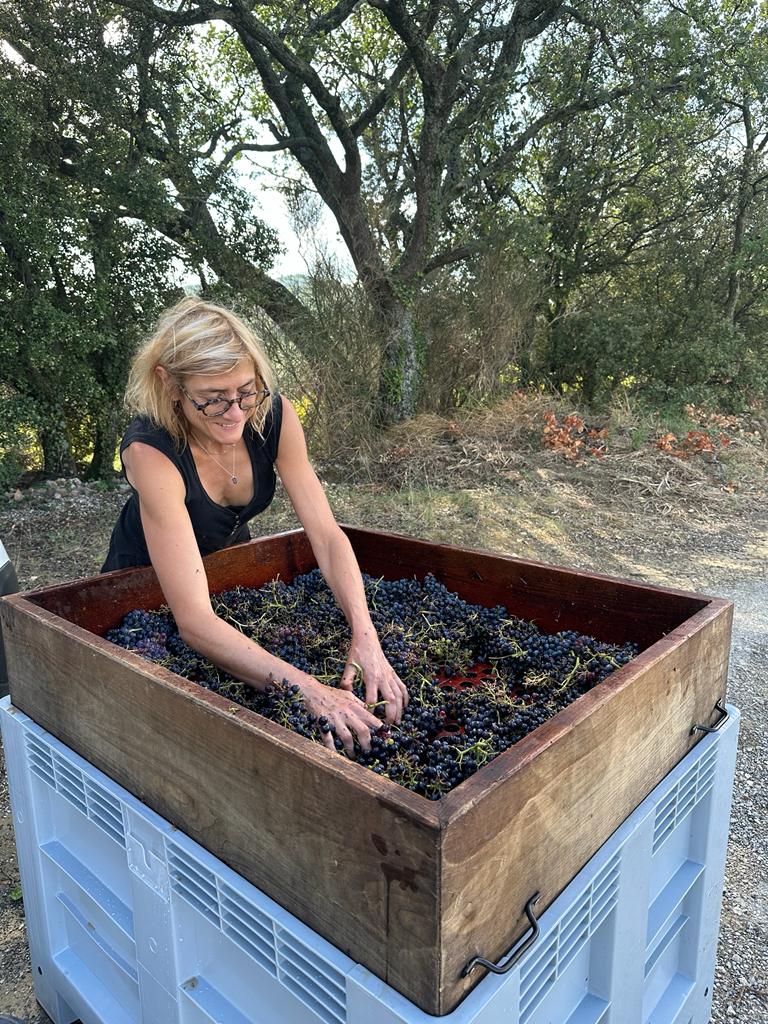
Can you tell me about your backgrounds - how did you come to make wine together?
Aurélien has been in vineyards since he was around 5 years old, because he and his family are very close to Pierre Overnoy. He started out working with Pierre and his brother Emmanuel in the Jura, and they exchanged a lot of ideas on nature and spirituality. He has always been in wine, especially natural wine - it only felt right to follow Pierre's approach. Aurélien likes to say that he doesn't know any different.
After that, he spent some time in Switzerland at another winery. I'm from Switzerland and had been a historian studying old manuscripts, but left this career to work as an animal traction service provider. That's how I met Aurélien - I came to work on the vines on the estate where he worked. Then we decided to set up a winery together. We found the domaine here in Côtes du Rhône in 2017 and fell in love with it. It's quite small and the vines are all around the house, so just the two of us can work it by ourselves.
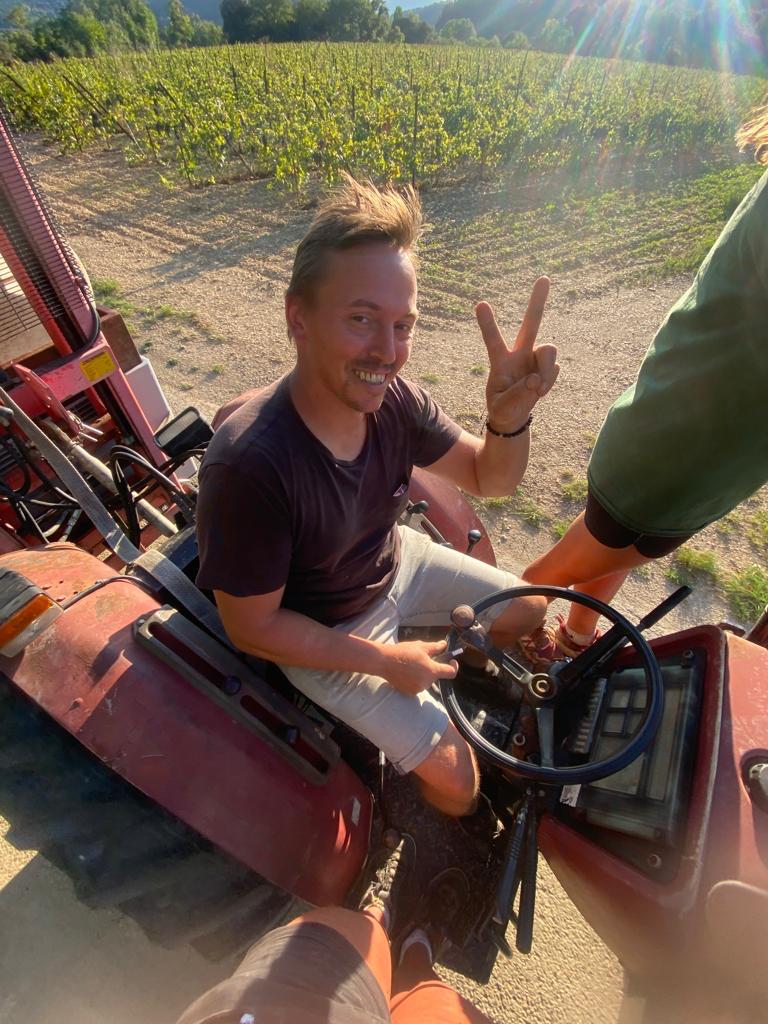
What's your approach to growing and making wine, and what has influenced this approach?
Of course, the most important thing is to respect nature, water and the consumer, and to work without any input. Because we were working in this way, it felt natural for us to work with horses in the field and make our own wine labels out of vines. To do this, we take the outer layer of the vine shoots and cook it with baking soda or ash, then bleach or dye it using pigments and turn it into paper using a traditional, old European frame.
It comes from the idea that we use everything in our domaine - there's no waste, so it's a circular system. The outside of the bottle reflects the inside. What's most important is to us is that we respect and reflect the environment, but we also prefer this kind of wine. When we converted the domaine to organics - and then some - we saw such change. First, the insects started coming back, then the birds, then all the different plants. We've been able to really witness the impact of this work.
Can you tell me about where you are in the Côtes du Rhône, and the grapes, climate and traditions that define the region?
We are in what we call the north of the south region. We are north from Châteauneuf-du-Pape and have typical grapes of this region - Grenache, Syrah and Cinsault, but we are also now looking for ancient varieties, like Bourboulenc and Picardan. We want to start making white wines and struggle with drought, and these varieties aren't so demanding of water. It's also what our customers want. For this wine, Indigo, we use Syrah - a variety more common in the north.
Is there much of a natural wine scene?
Not really - not in the true sense. We don't put anything into our wine and there's not many people here working like us. There's an expression in French that translates to 'natural and a half', which is what we say we are. Aurélien is used to Jura, where there are a lot more natural winemakers, so it's different here and can be a challenge. But there are some newcomers and it's developing, which is good.
Can you describe the vineyard and its surroundings?
We have nine hectares of total land, including woods, horses, ponies and donkeys, with five hectares of vines. We also have a small river and some hills, so it's not as flat as other areas in the Côtes du Rhône. It's a very old vineyard. The majority of our vines are 50 years old (including the Syrah used for Indigo), and we have two vines which are 70 years old. This is also why we produce quite a low volume, and another reason we're looking to plant some whites.
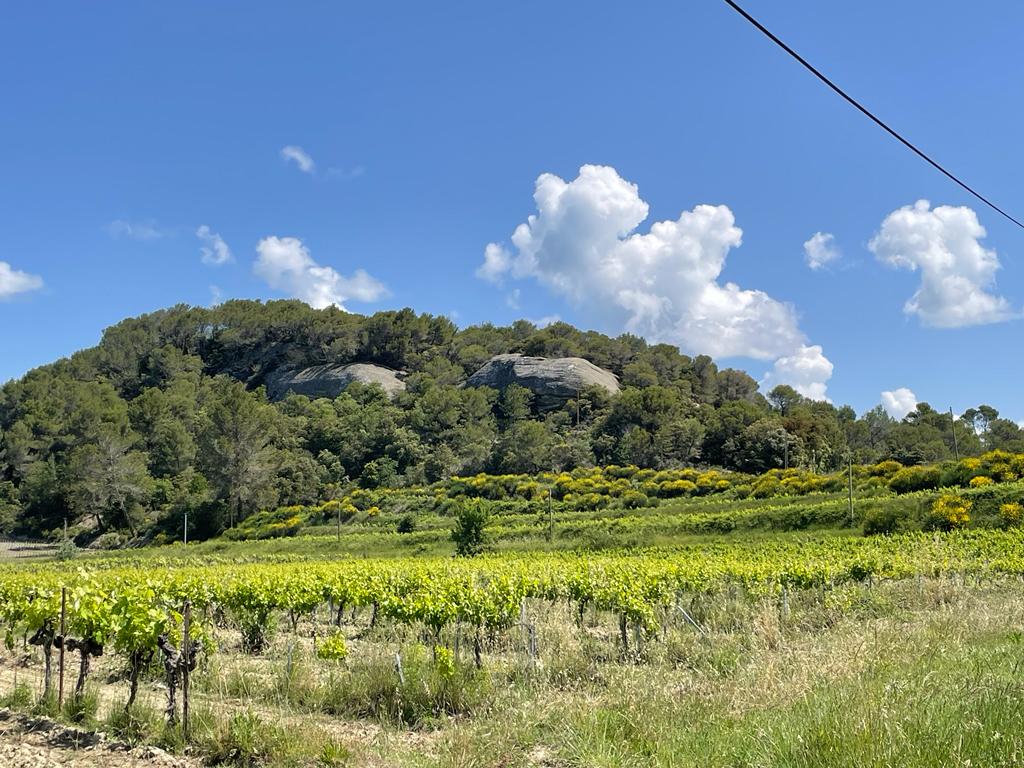
Can you describe the soil?
We have clay soil, which is very sticky. It's also quite useful because we have a rainy period during fall and winter, so get a lot of water at this time, but after that it's completely dry for many months and the soil becomes very hard. In some places, we have a little bit of compacted sand, which melts when it rains and mixes with the clay.
Can you talk me through the process of making this wine?
The harvest is always around September 10th, but we wait for 100 days after the plants flower and normally it falls around this time. Here, a lot of people harvest based on alcohol level as they like a strong wine, but natural wine is hard to make with too much sugar. In the south, we have quite strong varieties, and we want to keep some freshness to the juice. We harvest by hand and sort and select the grapes in the vineyard.
We destem using a wooden frame, and begin a semi carbonic fermentation and maceration. We don't over extract the grapes because we want a smooth wine, and we press when it's dry. The fermentation and maceration takes a total of 10 weeks. We then vinify in steel tanks for six months and wait for the winter as we don't filter our wines, so we need a cold temperature so that the lees can sink to the bottom of the tank. For the first vintage, we bottled and sent the wine out to sell straight away, but now we keep the wine in bottles for a year before selling. Because it's a strong red, you can enjoy immediately or continue to age it, as it ages really well. It just depends on preference, and if you like younger or older wines.
What are the total sulfites per liter?
Non detectable.
How would you describe the wine?
It's a Syrah, so quite a strong red, but it's also quite light and fruity. It's a wine you can drink with meat or cheese, but you can also enjoy it on its own. It black fruit and sometimes olive notes - similar to tapenade. The tannins are quite smooth.
How does this vintage, 2020, compare to others?
In 2019, we had a lot of rain and some mildew, but 2020 was a good vintage and you can taste it in the wine. It's not too concentrated and it's well balanced.
What’s the story behind the name of the wine, Indigo?
I was making the labels with vine shoot paper and in Provence, indigo is a traditional natural colour, so I dyed the labels with an indigo pigment. Our printer was going crazy, it made the machine totally blue.
Any food pairings you’d recommend?
Wild boar is a traditional dish here, so something like that, or some lamb, that's been barbecued. Spicy food also works well. You can pair this wine with big flavors and it doesn't disappear, but we also drink it on its own.
Isabelle's thoughts on Indigo - This winter warmer is another Syrah but a completely different expression of the same grape. This one is definitely Mediterranean in nature. Concentrated, ripe and spicy while also wonderfully elegant and mineral, it is an explosion of notes of the garrigue - wild thyme, oregano, black olive, dried flowers and ripe, black mulberries, alongside an almost minty freshness.
TOTAL SULFITES: 0 mg/L


